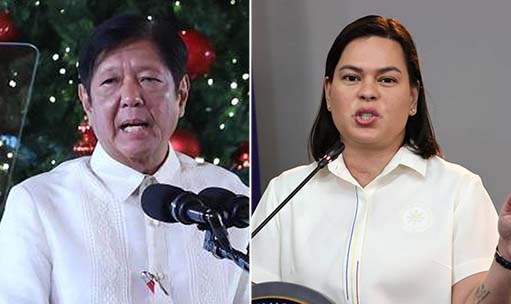Marcos hikes 2024 borrowing plan to P 2.57T

The Marcos administration is hiking its borrowing plan for this year to P2.57 trillion, as it also expects to plug a bigger budget deficit than it previously projected.
This is 4.47-percent higher than the previous 2024 borrowing program of P2.46 trillion, figures released on Monday by the Department of Finance (DOF) showed.
“That’s the result of the adjustment in the [budget] deficit [limit] for 2024,” National Treasurer Sharon Almanza said.
Economic officials came up with a higher financing plan for 2024 as they also project a wider fiscal deficit of P1.5 trillion (5.6 percent of gross domestic product (GDP)), from the old forecast of P1.4 trillion (5.1 percent of GDP).
For Aris Dacanay, economist at HSBC Global Research, the wider budget gap was a result of a less upbeat outlook on economic growth, and not because President Marcos is pursuing a more relaxed fiscal policy through aggressive spending.
“There is no change in fiscal policy here. It is just an incorporation of the fact that times are still harder than usual,” Dacanay said in a commentary.
The inter-agency Development Budget Coordination Committee (DBCC) tempered its economic growth target for 2024 to 6 to 7 percent—from 6.5 to 7.5 percent previously—to make the goal more realistic and take into account persistent headwinds brought about by high inflation and elevated borrowing costs.When the economy slows, state revenues would take a hit due to a smaller tax base. Based on latest DBCC projections, revenues are now expected to hit P4.3 trillion this year, from the previous forecast of P4.2 trillion.
Expenditures, meanwhile, are capped at P5.8 trillion this year, from the old program of P5.6 trillion.
“A lower GDP will result in lower revenues,” Finance Secretary Ralph Recto said in a Viber message to reporters.
“I plan to meet both (Bureau of Internal Revenue and Bureau of Customs) soon to discuss revenue targets. If they hit revenue targets then we do not need additional borrowings etc.,” Recto added.
Bigger debt
The larger borrowing plan in 2024 would put the debt-to-GDP ratio, a measure of the government’s ability to pay its debts, to 60.3 percent, still above the 60-percent threshold deemed manageable by credit rating agencies for emerging economies like the Philippines. This, while interest rates are expected to stay elevated for a much longer period as inflation remains stubbornly high.
The debts are needed to plug the state’s budget deficit, which is no longer expected to normalize to prepandemic level by the time Mr. Marcos leaves office in 2028, as Finance Secretary Ralph Recto avoids new taxes that, he said, would burden Filipinos at a time of rising cost of living.
Moving forward, the DOF said the Bureau of the Treasury developed a “strategic fundraising plan” that will continue to adopt a 75:25 borrowing mix in favor of domestic sources.
The finance department is trying to ramp up revenue collections without resorting to fresh taxes. For one, Recto has increased the dividend rate remittance of state-run firms from their net earnings for 2023 to 75 percent, from the minimum of 50 percent. INQ





















